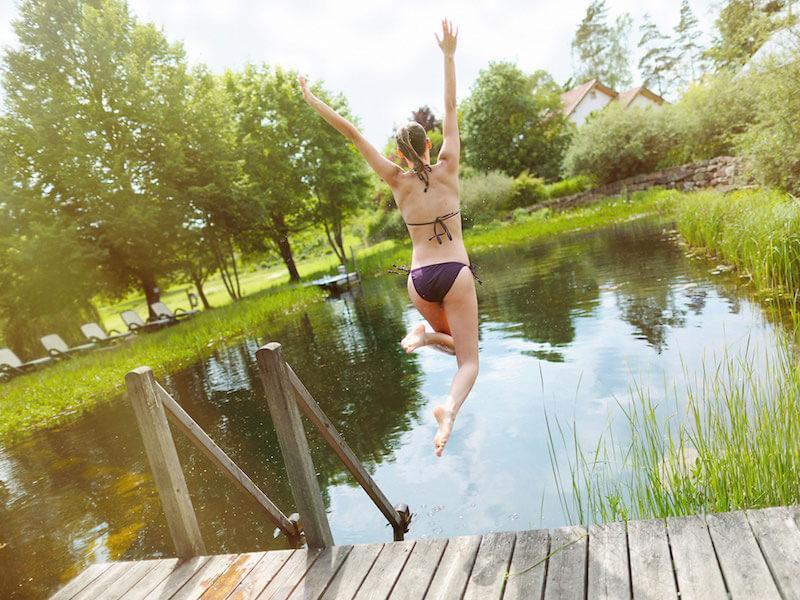Isn’t it nice that the sun can be seen here with us more often again? After we had so much snow in March, the spring may now start please 😀 As a rather pale person, the time begins when I have to remember to take sunscreen with me everywhere and use it. Why you should also do that, what else you should consider with your sun protection, and what the sun protection factor is, you’ll find out here.
Why sunscreen and why is it best to use it every day?
You probably already know what comes next. However, for the sake of completeness, I want to mention it. The UV radiation of the sun increases the risk of skin cancer considerably. Therefore, you should use sunscreen or skin cream with a sun protection factor every day and not only on vacation.
Because even if the sun doesn’t shine as strongly, because it’s hidden behind clouds, for example, or if your sunbathing doesn’t result in sunburn, the skin is still damaged. So, especially for children and teenagers, use sunscreen every day.
The right protection
The best sun protection is to enjoy the sun in moderation and avoid the strong midday sun. Clothing, sun hats, and sunglasses are also important protective measures against harmful UV rays. Only then comes sunscreen. So in summer, and even now on the first warm days of spring, reach for airy but long clothing rather than short ones.
Sunscreen – The agony of choice
There are many sun creams. Far too many … I, at least, am overwhelmed every year anew when I stand in front of the shelf. The only thing that is certain for me is that I need sunscreen with preferably SPF 50 or 50+. But what does that even mean?
The myth of sun protection factor
The sun protection factor, or SPF for short, gives you an orientation on how much longer you can stay in the sun without getting sunburned. This means that if you would normally have the first redness after 10 minutes, you could remain in the sun with sunscreen SPF 50 for just under 500 minutes. Provided you have applied the cream thick enough (about 2 mg per square centimeter of skin, or about 6 teaspoons over your entire body). We tend to apply too little, by the way.
One more note: Reapplying cream does not prolong protection. But it maintains it. Especially after swimming or when you sweat after sports, you should reapply new cream.

Chemical or mineral?
Sunscreen can be chemical or mineral. Chemical active ingredients are now increasingly criticized. They can have a negative impact on our health and the environment. But mineral blockers like zinc oxide are not without controversy either. Nevertheless, they are the better choice compared to chemically active sunscreens.
What you should watch out for above all: Your sunscreen should not contain nanoparticles. Their effects on us and the environment are as yet virtually unexplored; their use is controversial. So it’s better to avoid them.
By the way: Find out why you should use coral-safe sunscreens here.
A note on our own behalf: Sustainable sunscreens from Green Pearls® partners
On the subject of sun protection, I asked our partners. After all, some of them offer their own cosmetic lines, so there’s a good chance that sunscreen is included. And with some of them, this is the case:
At the HUBERTUS Mountain Refugio in Allgäu, you can buy and use sun protection from i+m Naturkosmetik Berlin. Our partners in Thailand and the Maldives offer coral-safe sunscreen, and the ADLER family has even developed its own sunscreen line that offers natural protection through phyto-melanin. Find out more here.
And now: apply sunscreen, get out, and enjoy the sun!





